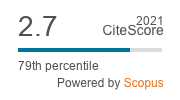PDF file is here
Latex code lies below:
%%%%%%%%%%%%%%%%%%%%%%%%%%%%%%%%%%%%%%%%%%%%%%%%%%%%%%%%%%%%%%
\documentclass[11pt,reqno]{amsart}
\usepackage{amsmath, amsthm, amsfonts, amssymb}
%\usepackage{graphicx, amscd, color}
\usepackage[colorlinks]{hyperref}
\usepackage[T1]{fontenc}
\usepackage[mathscr]{eucal}
\usepackage[polish,english]{babel}
\newtheorem{theorem}{Theorem}[section]
\newtheorem{algorithm}[theorem]{Algorithm}
\newtheorem{axiom}[theorem]{Axiom}
\newtheorem{case}[theorem]{Case}
\newtheorem{claim}[theorem]{Claim}
\newtheorem{conclusion}[theorem]{Conclusion}
\newtheorem{condition}[theorem]{Condition}
\newtheorem{conjecture}[theorem]{Conjecture}
\newtheorem{corollary}[theorem]{Corollary}
\newtheorem{criterion}[theorem]{Criterion}
\newtheorem{definition}[theorem]{Definition}
\newtheorem{example}[theorem]{Example}
\newtheorem{exercise}[theorem]{Exercise}
\newtheorem{lemma}[theorem]{Lemma}
\newtheorem{notation}[theorem]{Notation}
\newtheorem{problem}[theorem]{Problem}
\newtheorem{proposition}[theorem]{Proposition}
\newtheorem{remark}[theorem]{Remark}
\newtheorem{solution}[theorem]{Solution}
\newtheorem{summary}[theorem]{Summary}
\begin{document}
\title[Recent advances on nonlinear analysis and its applications]
{Recent advances on nonlinear analysis and its applications}
\date{}
\author[Author 1, Author 2, Author 3]{Author 1, Author 2, Author 3}
\begin{abstract}
This is an abstract.
\end{abstract}
\maketitle
\textbf{Mathematics Subject Classification (2010):}
\textbf{Key words and phrases:} Keyword 1 \; Keyword 2\; Keyword 3 \; Keyword 4\;
\section{Introduction}
In this paper $\mathbb{N}$ and $\mathbb{R}$ denote the sets of positive integers, respectively the set of real numbers, while
$\mathbb{N}_0:=\mathbb{N}\cup\{0\}$ and $\mathbb{R}_0^+:=[0,\infty)$.
\section{Preliminaries}
\begin{definition}\label{prop1}
This is a proposition
\end{definition}
\section{Main Results}
\begin{theorem}\label{thm1}
This is a proposition
\end{theorem}
\begin{proof}
This is a proof.
\end{proof}
\begin{proposition}\label{prop1}
This is a proposition
\end{proposition}
\begin{example}\label{ex}
This is an example.
\end{example}
\begin{corollary}\label{c8}
This is a corollary.
\end{corollary}
\begin{equation}\label{st}
This is an equation
\end{equation}
Enumerations:
\begin{itemize}
\item[$(i)$] Item 1.
\item[$(ii)$] Item 2.
\end{itemize}
\begin{itemize}
\item[$(i)$] Item 1.
\item[$(ii)$] Item 2.
\end{itemize}
\begin{remark} \label{re-max1}
This is a remark.
\end{remark}
\footnotesize
\begin{thebibliography}{00}
\bibitem{AXZ} R.P. Agarwal, B. Xu, W. Zhang, Stability of functional equations in single variable, J. Math. Anal. Appl. 288 (2003) 852–869.
\bibitem{Ba} J.A. Baker, The stability of certain functional equations, Proc. Amer. Math. Soc. 112 (1991) 729–732.
\end{thebibliography}
\noindent
First Authors Name and Surname \\
Department of Mathematics,
Name of University, \\
City, Country. \\
e-mail: name@univname.edu
\bigskip
\noindent
First Authors Name and Surname \\
Department of Mathematics,
Name of University, \\
City, Country. \\
e-mail: name@univname.edu
\bigskip
\noindent
First Authors Name and Surname \\
Department of Mathematics,
Name of University, \\
City, Country. \\
e-mail: name@univname.edu
\bigskip
\end{document}



